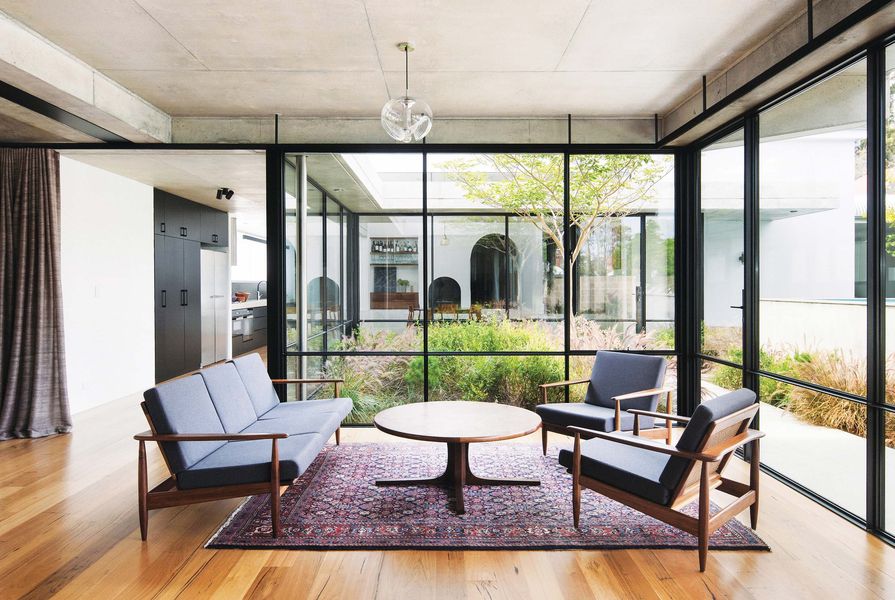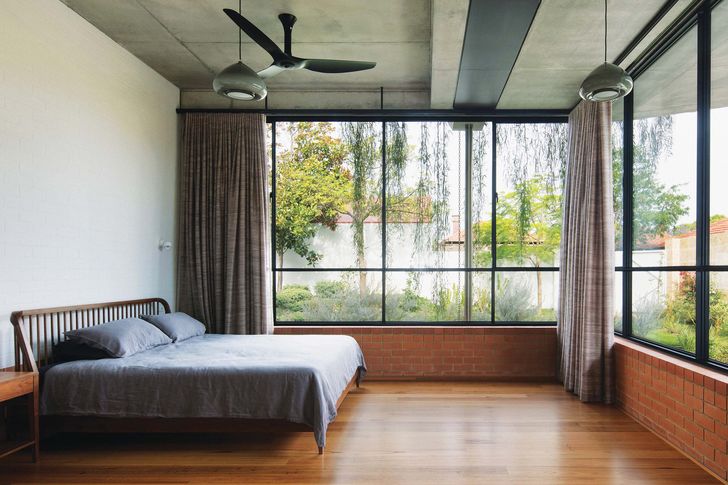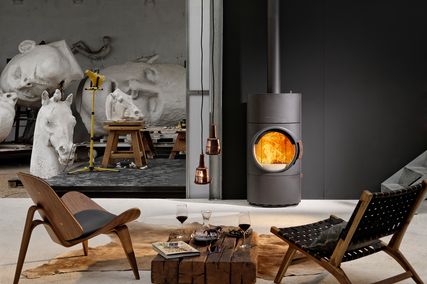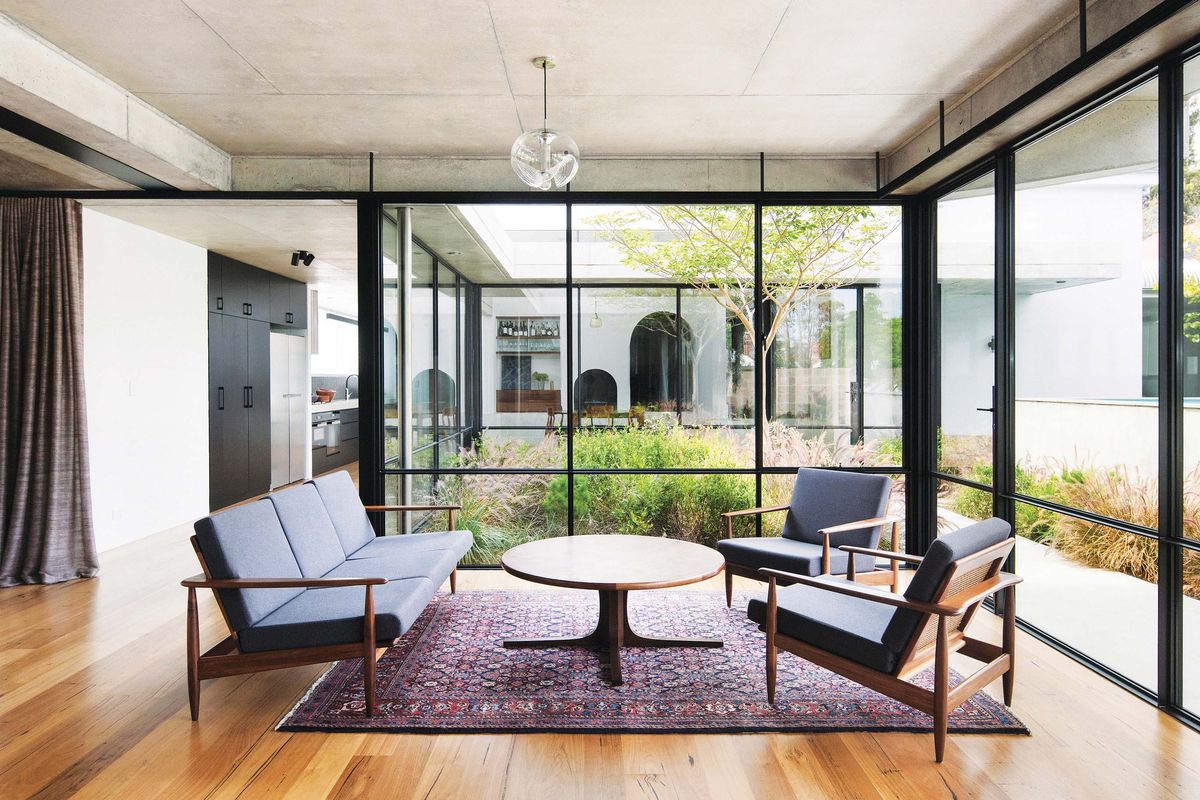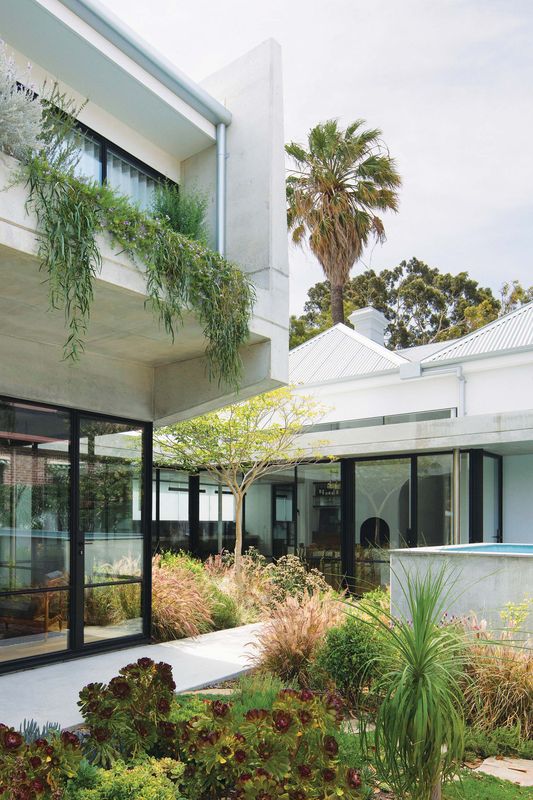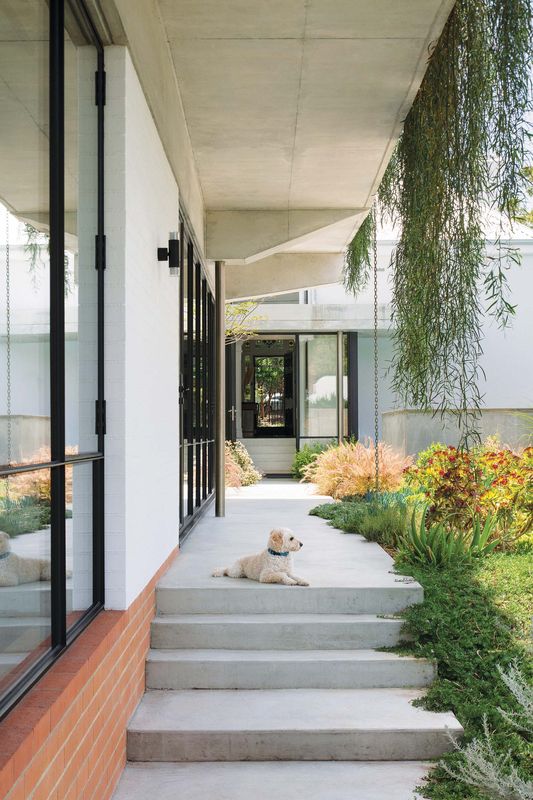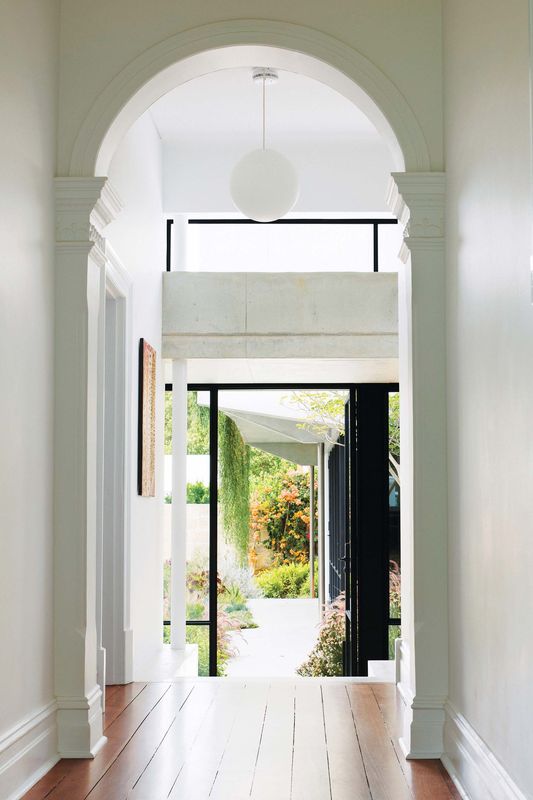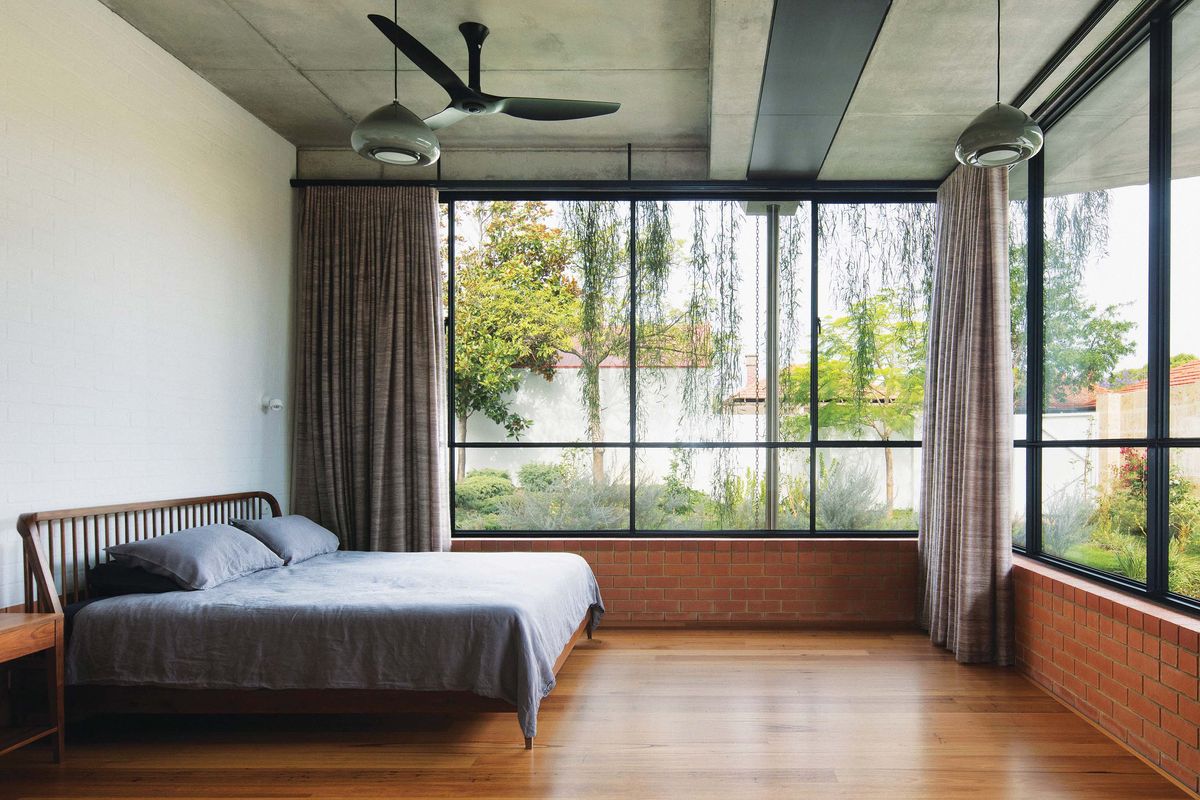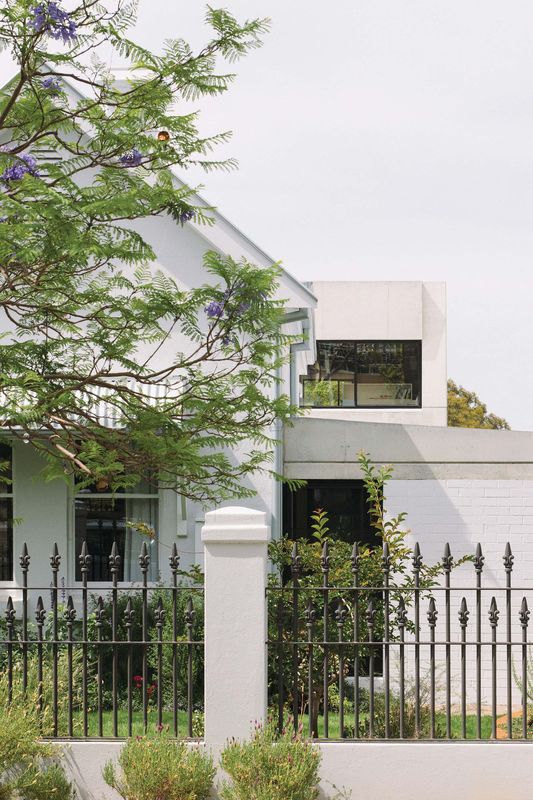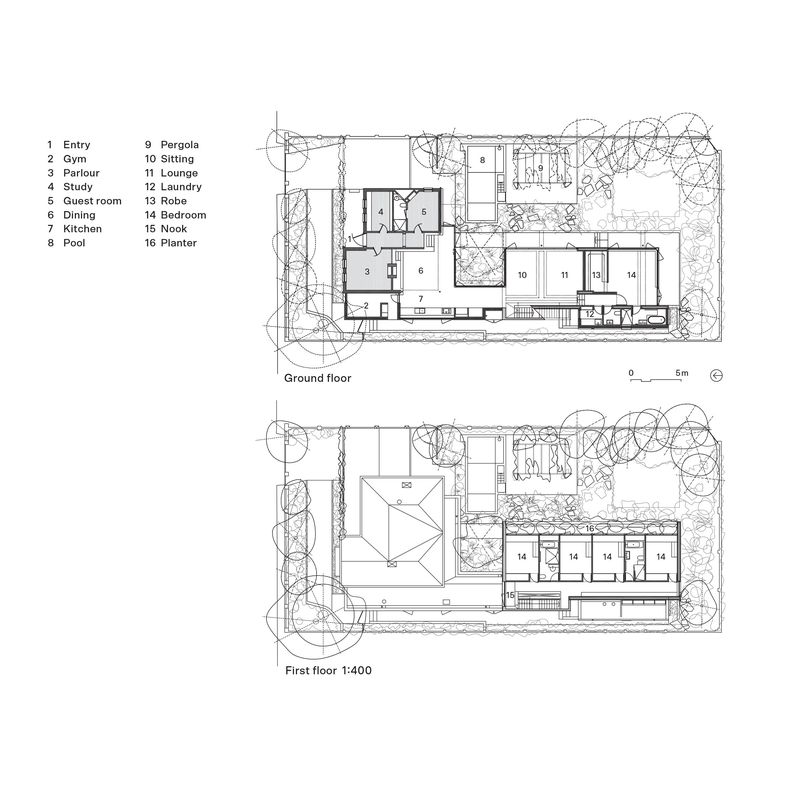Reed House is an architecture of intimate collaboration. It is intertwined with the life story of the architect Beth George and her clients: her sister Fran (an archaeologist), brother-in-law Mark (whom she has known since their teenage years) and their four daughters. The project involved the collective pursuit of ideas and aspirations via material construction – but also a shared understanding that architecture is a means for accommodating and celebrating the life that goes on within it. The resulting architectural outcome is an armature of experiences: past, present and future.
The decision to remediate the original and unlisted 1908 home retains a fragment of the heritage precinct streetscape; and, more importantly, it means the interior spaces, where memories have been formed, have been preserved.
A nostalgic response is resisted, however, with the careful reconfiguration of old and new to the rear. At this critical juncture, a new kitchen-dining space and its adjacent planted courtyard mark the gathering of family, building and garden. Excavating the ground below the existing floor level allowed a new, generous volume to be formed, becoming “something of a dig site within the old cottage.” Embedded fragments of the original limestone footings are purposefully made visible in the face of a new concrete plinth, which is the beginning of a continuum of concrete throughout the home. Connections are formed directly and indirectly, with the outside now being registered inside as new views and light illuminate the home. The old hallway appears to extend into the garden, aligning with an external pathway now enclosed by a native garden spilling over the upper-storey cantilevered concrete planter.
The defined geometry and minimal colour palette of the architecture contrasts with the joyful unruliness of the plantings.
Image: Benjamin Hosking
Beth says the design “entailed reactions to site, zoning of the house program and all of the usual stuff, but it is also built from memory.” Both she and her sister recall time spent together on a lawn adjacent to their childhood bedrooms and the delight of a garden tended by their mother that foregrounded their home at the edge of a national park in the Perth hills. This shared memory of garden spaces plays a key role in Reed House, where each new internal space is defined through a distinct association with a unique garden condition: a plant-filled courtyard defines the dining-kitchen space; the living space opens out to a lawned play space and pool; a walled garden wraps the main bedroom; zenithal light filters through neighbouring trees into the bathing spaces; the upper-storey hallway is bookended by framed views of a blooming jacaranda and a public park beyond; and, finally, the wall-to-wall concrete planter box and its native plants screen the distant city skyline from the children’s bedrooms on the upper level. Conceptually, the garden spaces become a generational link to a shared spatial history; as the gardens grow, they will also register the passage of time against the presence and permanence of the home.
Formally and pragmatically, the new concrete structure undertakes multiple roles: it is floor and wall, ceiling and cantilever, inside and outside all at once. Externally, its folds capture and deliver water to the native gardens below. Internally, the exposed concrete structure defines, connects and becomes informally occupied space, such as steps, plinths and window seats. There is a purposeful ambiguity to the resulting living and circulation spaces. The generous dimensions can accommodate impromptu ballet and gymnastic performances when the curtains are left open; when the curtains are drawn a collection of individual zones is created. Elsewhere, private spaces are made distinct with refined details and unique material combinations of ceramic tile, face brick and stained plywood.
A logic of concrete flows across the site, defining a material aesthetic that extends throughout.
Image: Benjamin Hosking
In this way, the interior is defined not by a set of traditionally named rooms but, as Fran says, by “a series of short stories.” One such “story” is found in the faceted plywood-lined reading nook on the upper level, where a soft pink glow, refracted through the painted skylight ceiling, washes down the adjacent wall to the floor level below at various times and intensities. It is a background to life: orchestrated but always elusive, memorable but ever-changing.
The skill of the architect is therefore not in imposing but instead in registering, evoking and amplifying experiences. The clients acknowledge this as a key contribution, along with the skill and care of the builder and tradies throughout the process. “Trying to translate what you feel into something that then gives you what you want – that’s a tricky thing,” Mark says.
This kind of architecture is not measured in square-metre rates or by rooms and features to be listed in a real-estate pitch. This is a home. One that binds sentiments of past experience with new memories and fleeting moments from daily life. It is designed to generate a much longer-term value – one that is deeply felt, shared and recalled.
Products and materials
- Roofing
- Lysaght Klip-lok; Custom Orb in Colorbond ‘Shale Grey’
- External walls
- Midland Brick Kalbarri bricks; Dulux ‘Terrace White’ and ‘Lexicon’ half
- Internal walls
- Exposed concrete in Lithofin sealer; Dulux ‘Lexicon’ half and Acratex Acrasand in ‘Lexicon Half’
- Windows
- Custom steel frames in matt black powdercoat by Ozsteel Design; Viridian Lightbridge double glazing; Silent Gliss curtain tracks in matt black powdercoat
- Doors
- Custom jarrah frames in Dulux ‘Lexicon’ half by Cockburn Joinery; Hume Solicore ply-faced doors in Feast Watson liming white; Manital brass round knobs; Tradco Baltimore levers in matt black
- Flooring
- Subiaco Restoration wormy chestnut boards; polished concrete slabs in Lithofin sealer Lighting: Xlight Verop Pinhole and Relux 110, Light Industry Barro spotlights and Slik 150 pendants, Hunza Twin Wall Spots and Pagoda Pagoda Lite, all from Alti Lighting; vintage mid-century lights sought by client
- Kitchen
- Custom plywood cabinets by Shepherd Craft Furniture; Inax Yohen Border mosaic tiles; Ilve rangehood; Halliday and Baillie continuous drawer pulls; Tech 100 sink from The Sink Warehouse; Dorf Vixen retractable mixer; Miele oven, speed oven, cooktop and dishwasher Bathroom: Inax Yohen Border mosaic tiles; Dotti ivory and matt white tiles from Original Ceramics; Rogerseller Amélie baths, Arq mixer, Gas bath outlet and Strap towel rails; Caroma Leda and Teo basins; Concrete Colour Systems polished screed flooring in ‘Kelp’ and ‘Flamingo’; Mizu mixer from Reece
- External elements
- Eco Outdoor split stone porch paving; reclaimed Toodyay stone crazy paving; reclaimed brick paving; driveway cobblestone laid by Premier Constructed
- Other
- Custom dining table designed by Guy Eddington; custom display unit by Shepherd Craft Furniture; Ethnicraft Spindle bed; couch from Öopenspace; pool by Reflections Pools
Credits
- Project
- Reed House by Beth George
- Architect
-
Beth George
- Project Team
- Beth George
- Consultants
-
Builder
Alan Pope and Associates
Concrete formwork Bregma
Engineer Atelier JV
Landscape architect Banksia and Lime
- Aboriginal Nation
- Reed House is built on the land of the Whadjuk people of the Nyoongar nation
- Site Details
-
Location
Subiaco,
Perth,
WA,
Australia
Site type Suburban
Site area 885 m2
Building area 383 m2
- Project Details
-
Completion date
2019
Design, documentation 36 months
Construction 18 months
Category Residential
Type Alts and adds
Source
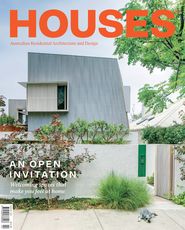
Project
Published online: 22 Oct 2021
Words:
Brett Mitchell
Images:
Benjamin Hosking,
Beth George
Issue
Houses, April 2020

